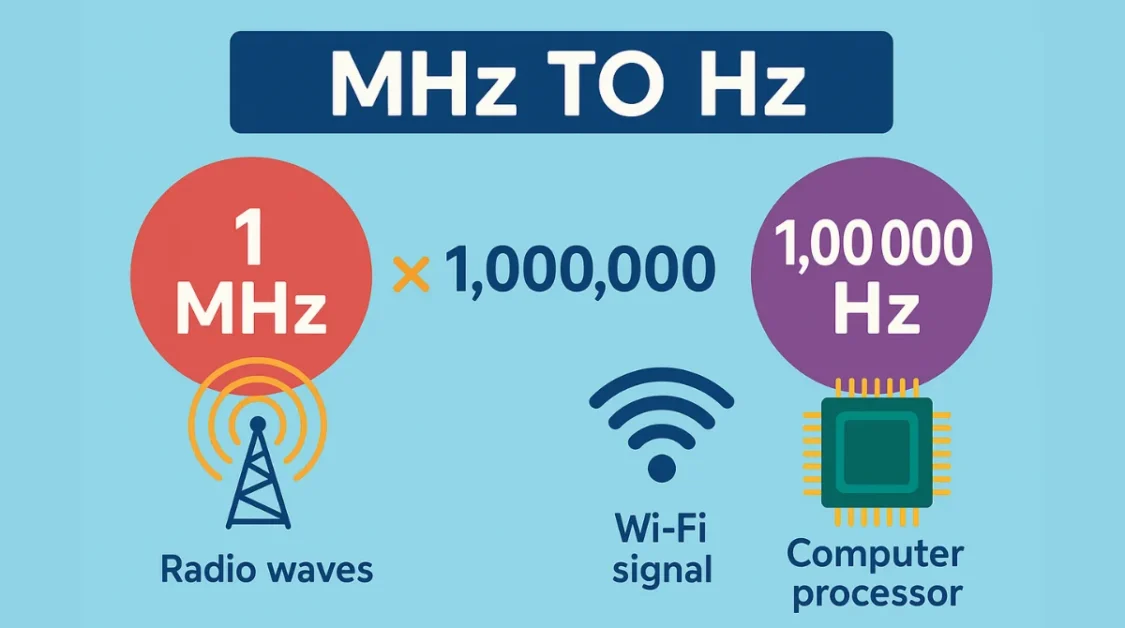What Is a WiFi Pineapple?
A WiFi Pineapple is a specialized device used to assess the security of wireless networks. It works by mimicking legitimate Wi-Fi networks, tricking nearby devices into connecting to it. Once a device is connected, the WiFi Pineapple can intercept and monitor all data being transmitted, potentially exposing sensitive information. While it serves as a valuable tool for cybersecurity professionals to test network vulnerabilities, it can also be exploited by hackers for malicious purposes, such as stealing personal data. Tools like Astrill VPN, Twingate, and 47Cyber help mitigate risks associated with such attacks by providing added layers of security.
How Does It Work?
The WiFi Pineapple works by exploiting how devices connect to Wi-Fi networks. Many devices are programmed to remember networks they’ve previously connected to and will automatically reconnect when in range. The Pineapple takes advantage of this by broadcasting the same network name (SSID) as a trusted network, tricking devices into connecting to it without their knowledge. Once connected, the Pineapple acts as a middleman, allowing the attacker to intercept and monitor all data being transmitted. This can include sensitive information like login credentials, personal messages, or payment details. Tools like Twingate offer additional security features to protect against such attacks by ensuring that devices only connect to trusted, secure networksm.
Common Attacks Using WiFi Pineapple
The WiFi Pineapple is often used in various cyberattacks to exploit unsuspecting users. Here are the most common attack methods and how they work:
1. Man-in-the-Middle (MITM) Attacks
In a Man-in-the-Middle attack, the WiFi Pineapple positions itself between your device and the internet. It silently intercepts all the information you send and receive this includes login credentials, personal messages, and even financial details. Because it sits quietly in the middle, you won’t even realize your data is being captured or altered. Tools like those from Keepnet Labs and 47Cyber help raise awareness and defend against such threats.
2. Evil Twin Attack
This attack involves creating a fake Wi-Fi network that has the same name (SSID) as a real, trusted one like your favorite coffee shop’s Wi-Fi. Your phone or laptop, recognizing the name, connects automatically. Once you’re connected, the attacker can monitor everything you do online and access sensitive data. Keepnet Labs and Geekflare highlight how this method is commonly used to spy on users and collect personal information.
3. Fake HTTPS
HTTPS is meant to protect your information by encrypting it during transmission. But the WiFi Pineapple can trick your browser into visiting the non-secure version of a website HTTP instead of HTTPS. This removes the encryption, letting the attacker see all your activity clearly. They can view login forms, messages, and credit card details. Geekflare and Astrill VPN emphasize how attackers exploit browser trust to pull off this attack.
4. Credential Harvesting
This method uses fake login pages that look almost identical to real ones like a copy of your bank’s sign-in page or social media login screen. When you enter your username and password, the attacker instantly receives them. It’s an easy way for hackers to steal access to your accounts. According to Keepnet Labs, credential harvesting is one of the most common and dangerous threats today.
Potential Risks of Using WiFi Pineapple
The WiFi Pineapple is a powerful device, but using it especially without the right skills or permission comes with several important risks. These risks can be divided into three major categories: legal, ethical, and technical.
1. Legal Risks
Using a WiFi Pineapple to scan or connect to networks that you don’t own or have permission to test can be illegal in many countries. Laws like the Computer Fraud and Abuse Act (CFAA) in the United States and similar regulations elsewhere treat unauthorized access to networks as a serious crime.
Possible consequences include:
- Heavy fines
- Criminal charges
- Jail time
Always make sure you have written permission before using this tool on any network that isn’t your own.
2. Ethical Risks
Even if something is technically possible, that doesn’t make it right. Using a WiFi Pineapple to:
- Monitor users without their consent
- Steal personal or financial information
- Pretend to be a trusted Wi-Fi hotspot
…is highly unethical. This behavior violates people’s privacy and trust. Ethical hacking is about finding weaknesses to help others fix them, not to take advantage.
3. Technical Risks
Improper use of the device can also backfire on you. If you’re not experienced, you could:
- Misconfigure the Pineapple and expose your own device to attacks
- Accidentally reveal your location or IP address
- Leak data that was not intended for capture
- Install malware or scripts that harm your system or network
Without proper security settings, you may even open up your own network to other hackers who detect the tool running.
Legal and Ethical Considerations
Owning a WiFi Pineapple is legal in many countries, especially when used for ethical purposes like testing network security. Cybersecurity professionals use it to find and fix vulnerabilities in Wi-Fi networks. However, using it to access someone else’s network without permission or to steal data is both illegal and unethical. Misusing this tool can lead to serious legal consequences, including fines or jail time. It’s important to understand the difference between ethical hacking and malicious activity. According to PoweredWiFi, responsible use of the WiFi Pineapple is key, and it should only be used for authorized testing in controlled environments.
Protecting Yourself from WiFi Pineapple Attacks
WiFi Pineapple attacks can be sneaky, but with the right habits and tools, you can protect yourself. Here’s how to stay safe:
1. Turn Off Wi-Fi When Not in Use
When you’re not using Wi-Fi, simply turn it off on your device. This prevents your phone, tablet, or laptop from automatically connecting to nearby networks without your knowledge. Devices are often set to reconnect to known networks automatically, which attackers can exploit. Time highlights this as a simple yet effective security step.
2. Avoid Public Wi-Fi for Sensitive Transactions
Public Wi-Fi like the kind in cafes, airports, or malls is often unsecured. It’s best not to log into bank accounts, email, or other sensitive services while connected to these networks. Hackers can easily monitor traffic on unsecured public Wi-Fi, making your personal data vulnerable to theft.
3. Use a VPN
A Virtual Private Network (VPN) creates a secure, encrypted tunnel between your device and the internet. This means even if someone intercepts your data using a WiFi Pineapple, it will be unreadable. VPNs are especially useful when using public networks, offering an added layer of protection. Services like Twingate and others are trusted for creating private, secure connections.
4. Be Cautious of Network Names
Always double-check the name of the Wi-Fi network you’re connecting to. Attackers often create fake networks with names that look familiar, such as “Starbucks_WiFi” or “Airport_FreeNet”. If you see duplicates or strange network names, avoid connecting. Time recommends verifying with staff or avoiding the connection altogether if you’re unsure.
5. Keep Your Devices Updated
Software updates often include important security patches that protect your device from known vulnerabilities. Make sure your phone, laptop, and any apps you use are regularly updated. Keeping your system current helps block many of the tricks used by tools like the WiFi Pineapple. Twingate also stresses this as a core part of digital safety.
How Hackers Misuse WiFi Pineapple Devices?

While the WiFi Pineapple was created as a tool for ethical hacking and network security testing, it’s also commonly misused by cybercriminals. Hackers take advantage of its ability to imitate trusted Wi-Fi networks, setting up fake hotspots in public places like cafes, airports, or libraries. When unsuspecting users connect, hackers can spy on their online activity, steal login credentials, or access private data.
These attackers can also use the Pineapple to redirect users to fake websites, harvest personal information, or install malware. Because the device is easy to operate and portable, it’s become a popular choice among cybercriminals for conducting silent, undetectable attacks. This misuse highlights the importance of staying cautious on public Wi-Fi and using tools like VPNs to stay secure.
Examples of WiFi Pineapple Attacks
To understand the danger of WiFi Pineapple attacks, let’s look at some realistic examples that show how easily someone can become a victim. These examples highlight how attackers exploit everyday habits to steal data, monitor activity, or even take control of devices.
1. Fake Coffee Shop Wi-Fi
Scenario:
You’re sitting in a coffee shop and see a network called “CoffeeShop_FreeWiFi”. It looks legit, so you connect. However, this network is actually created by a hacker using a WiFi Pineapple sitting quietly at a nearby table.
What Happens:
Once connected, all your internet traffic passes through the hacker’s device. They can now see every website you visit, read unencrypted data, and even capture your login details if you’re not using HTTPS or a VPN.
2. Airport Evil Twin Attack
Scenario:
At a busy airport, your phone automatically connects to a network called “Airport_WiFi”, which it remembers from a past trip. You start browsing your email and banking app.
What Happens:
An attacker nearby is running a WiFi Pineapple with the same SSID as the real airport Wi-Fi. Your phone connects automatically without asking. Now, the attacker can see and record your online activity and redirect you to fake versions of websites.
3. Redirect to Fake Login Pages
Scenario:
While checking Facebook on public Wi-Fi, you’re redirected to a login screen that looks completely normal. You enter your email and password without thinking twice.
What Happens:
The login page is fake created and served through the Pineapple. Your credentials are instantly saved by the attacker and can now be used to access your account, reset passwords, or perform identity theft.
4. Capturing Corporate Data from Remote Workers
Scenario:
A remote employee connects to what appears to be the company’s VPN through Wi-Fi at a coworking space.
What Happens:
The WiFi Pineapple mimics the VPN or office network name. The employee unknowingly connects to it. The attacker now has access to confidential files, internal emails, or even administrator login credentials, putting the company at serious risk.
5. Intercepting Messages on Dating Apps or Social Media
Scenario:
You’re chatting on a dating app or sharing personal moments on social media while connected to public Wi-Fi.
What Happens:
With a WiFi Pineapple in place, an attacker can intercept messages, view photos, and even track who you’re talking to especially if the app doesn’t fully encrypt its traffic. This type of spying can lead to privacy violations or even blackmail in extreme cases.
Conclusion
The WiFi Pineapple is a powerful and valuable tool for ethical hackers and cybersecurity professionals to test and improve network security. However, when used by malicious individuals, it can pose serious threats to your privacy and data. Understanding how it works, recognizing the types of attacks it can perform, and knowing how to protect yourself are key steps in staying safe. Always be careful when connecting to public Wi-Fi, and use tools like VPNs and software updates to defend against such threats. According to PoweredWiFi and Time, staying alert is your best defense against WiFi Pineapple attacks.
Relared Topic: Understanding AMPAK Technology: Devices on Your Wi-Fi Network



